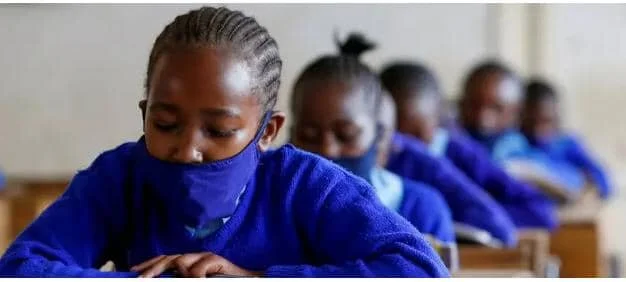Lessons Learned In Lockdown
Like the majority of the world’s students, I have seen the way that I access my education change dramatically since the outbreak of Covid-19. In March 2020, The Washington Post reported that nearly 1.5 billion children and young people – 87 percent of the global student population – have been affected by the widespread school closures caused by the pandemic. In large part, schooling has moved online, with several countries pairing this with television and radio programmes for students who do not have access to the technology necessary to participate in online learning.
For some, this has been a welcome change: the widespread adoption of online teaching has been a big step forward in the fight for equal access to education for disabled people. Students with a variety of disabilities, myself included, have spent years campaigning for their courses to be supplemented with online materials so that they are not placed at a disadvantage when they miss a topic (be that because classrooms are physically inaccessible to wheelchairs, or a flare-up of symptoms leave them bedbound for weeks on end, or because they are in crippling pain and cannot survive a full day on campus – all scenarios that I have experienced in some way).
However, despite these students’ campaigns, many institutions – at the primary, secondary and tertiary levels – have previously failed to implement universal policies regarding the provision of supplementary online teaching (such as lecture recordings). Individual tutors have been left to navigate both the technical realm of online services and the debates over intellectual property on their own, and many disabled students have suffered because of it. Indeed, some drop out because the strain on their health is too much when they feel that they must continuously be on campus to avoid missing vital teaching.
Nevertheless, within weeks of the Covid-19 pandemic closing schools and universities, most learnings were happening in an online space. Institutions embraced online teaching as a means to sustain their students’ educational progress during the lockdown. The relief felt in the disabled community at this development has been palpable. Students like myself no longer feel as though they are faced with the daily decision: Do I compromise my health to access my education?
However, the move to predominantly online learning has also highlighted a variety of socio-economic inequalities, both domestic and global. Many students across the world struggle to consistently access the internet and/or electricity: it is estimated that only 60 percent of students in Mexico can access the internet. In Nigeria, households may have just 3.6 - 6.3 hours of electricity in a day. With such limited internet and electricity capacity, students in these areas are unable to routinely access learning materials provided online.
AS long as students remain at the mercy of unpredictable energy supply, they cannot reliably utilize the supplemental television programs provided by individual governments, particularly when there are no repeat broadcasts. Indeed, online education provider OpenLearn notes that an issue with time-limited online learning is that it only allows for a small degree of flexibility in scheduling. Once a session is passed, a student cannot return to it.
Many students in the UK are also struggling to maintain their studies in the Covid-19 world. The University of York has advised students without access to the technology needed to continue their education off-campus and to take a leave of absence until they can resume their studies in-person. The issue has been taken with this move, which appears to demonstrate (intentionally or not) preferential treatment to students who have access to laptops and WiFi or the financial means to obtain it.
Education in the time of Covid-19 is clearly exacerbating the inequalities present in the attainment gap, wherein students from deprived communities struggle to achieve academic success at the same rate as students from affluent backgrounds.
Data shows that since the start of the UK lockdown private school students were twice as likely as their state school counterparts to access online teaching every day. This is likely due, in part, to the long-standing discrepancies in funding between private and state schools. Carl Cullinane reports that 60 percent of private schools in the UK already had online learning portals prior to the Covid-19 outbreak, and so had the means to swiftly shift their teaching materials online, whereas only 23 percent of the most deprived state schools had online portals.
I firmly believe that online education is an invaluable resource in the quest to make education equally accessible to all. As a disabled student with a chronic illness, I was only able to attend university because I had previously been provided with three years of online learning where I attained the necessary qualifications
. For me, it was a life-changing experience, and I hope that institutions will continue to integrate online teaching methods into their everyday practice in the future. Although progress perhaps still needs to be made in incorporating classroom support into the online sphere, for students with specific learning difficulties. Online learning is by no means suitable for all, and the sudden shift to this method of delivering education is highlighting rampant inequalities that must be addressed.
By Emily Bailey
Are you interested in learning more on COVID-19 topics? The Youth Cafe has compiled a series of articles that give youth insights on COVID-19 myth, impact, and how to protect youths during the season. To explore more, visit our COVID-19 and Youths Page.


